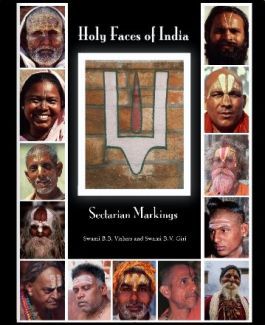Whenever one visits a temple in India, it is common to see the foreheads of devotees and priests adorned with markings that are commonly known as tilaka. When the British first arrived in the subcontinent they unwittingly assumed these signs to be 'caste marks' or signs that indicated the wearers' particular social status. Actually tilaka is a sectarian mark worn by a devotee of a particular deity and denotes ones devotion to that deity. Tilaka, or pundra as it is also called, can be classified in three divisions — urdhva (vertical), tiryak (horizontal) and vartula (circular).

